The Walter Anderson Museum of Art
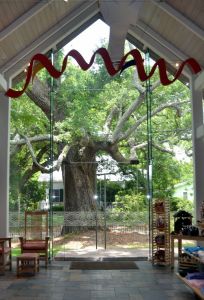
The Walter Anderson Museum of Art
Nestled under ancient live oaks in the sleepy little coastal town of Ocean Springs, Mississippi, is a museum built from dreams. The Walter Anderson Museum of Art was conceived by a group of selfless people who were touched by the work of Walter Anderson, an artist who had lived for almost twenty years on a nearby wilderness island. They dreamed of sharing the inspiration they derived from his art and devoted endless hours and precious resources to building a place where people could discover for themselves the beauty of Anderson’s creativity.
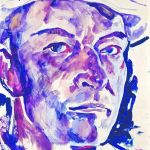
Self-portrait
Walter Anderson summed up what he was doing on the island in one sentence: “In order to realize the beauty of humanity we must realize our relation to nature.” He realized the beauty of humanity by rediscovering the Garden of Eden. Living under the stars, celebrating each sunrise and sunset, he became, in his words, “Adam in a hat.” By erasing the line between himself and nature he was able, like Adam, to become part of nature. In his journals he tried to describe what this was like. After watching a bird take flight he wrote: “The bird flies and in that fraction of a fraction of a second man and the bird are real. He is not only a king. He is a man. He is not only a man. He is the only man. And that is the only bird. Every feather, every mark, every part of the pattern of its feathers is real. And he, man, exists. And he is almost as wonderful as the thing he sees.” This was how he “realized” his relationship to nature. Those who “see” his art experience a little of what it was like for him to realize the beauty of humanity in this way. They feel his love of nature and see their own beauty reflected in his paintings. This is what the people who built the museum envisioned.
- Towhee
- Possum
- Magic Hour
- Sand Hill Cranes
- Dawn
- Fish
Their dream was a natural extension of his. But Walter Anderson’s dream of realizing the beauty of humanity was also born in an earlier time. His mother, Annette McConnell Anderson, had inscribed into the fireplace mantle in her bedroom these words: “He whom a dream hath possessed knoweth no more of doubting.” As an artist deeply involved in the Newcomb Arts and Crafts Movement she had developed the philosophy that, “If all human beings surround themselves with beauty the world will become a more beautiful place.” Her dream was to make the world more beautiful by encouraging others to surround themselves with beauty. She believed so strongly in this that her three sons all became artists.
Annette Anderson was a brilliantly original thinker. But even her dream seems to have originated in yet another place. While at Newcomb College she had been influenced by William and Ellsworth Woodward. These two brothers had come to New Orleans from the Rhode Island School of Design and wanted to play a role in establishing a new, more endemic, form of Southern art. Rather than idealizing art from other places, they urged students and friends to base their art firmly in the forms, colors, and motifs characteristic of the place in which they worked. Of course, their desire to create a new form of art probably originated in the Arts and Craft Movement of John Ruskin and William Morris and that movement, in turn, owes a good deal to the transcendental ideals of Ralph Waldo Emerson and Henry Thoreau.
Naturally there is an ethereal, dreamlike feel to this place. As visitors walk up to the entrance they can almost sense Emerson and Thoreau looking over their shoulders. As they pass through the doors the oaks seem to follow them inside. Then there is the art. Although it is distinctively different from any other art, it seems so genuine that visitors say things such as, “I never saw a pine tree until I looked at one of his. Now I can’t see pine trees in any other way. I had no idea that they could be so interesting or so beautiful.” Others suddenly begin to see the visual music that he was describing when he wrote:
All movement is to visible music,
although few people hear it.
It comes from the sun and the wind
and the movement of water
and a running rabbit and a crowing cock.
All together it is part
of a great symphony.
The longer we listen
and the quieter we are,
The more we hear.
And when we do hear
we are part of the music
instead of an unwelcome
interruption.
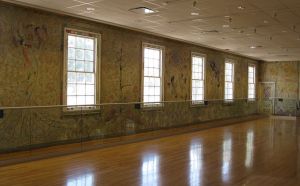
Part of mural Walter Anderson gave to community
At one end of the museum is a gigantic mural that he painted as a gift to the community. At the other end is the intensely intimate mural that he painted in his cottage as a song of thanks for all that nature had given to him. In between are the galleries where continually changing exhibits of his art and the art of others who love nature are displayed. Another of his murals is high up on the walls. There are also artifacts of his life and exhibits of his sculpture and pottery.
- Bear
- Spiral of Life
- Deer
The most important aspect of this museum, however, is the people who walk through its door. It has, in fact, become a nexus for creative people. While visiting they talk with each other. Ideas flow back and forth, swirling together to form new ideas. Visitors often memorialize their experiences. For example, Gregory Entrican’s poetic video of his family’s visit is fantastic.
And the song that Caroline Herring created is glorious.
Many of the poems that have been written after a visit are astounding. The museum and Walter Anderson’s art inspire others by providing proof that humanity can be beautiful at a time in history when many feel bombarded by banality. Honey Boo Boo’s temper tantrums and Anthony Weiner’s weiner have become pervasive images recognized by almost everyone. Although few have encountered Walter Anderson’s iconic images, they provide a refreshing alternative. They offer a reality based upon the beauty of humanity. They provide physical evidence that it is possible for human beings to realize their beauty by realizing their relationship to nature. No wonder this museum has become a gathering place!
Of course it is not the first or the only place to draw such people to Ocean Springs. Peter Anderson, Walter’s older brother, opened Shearwater Pottery in 1928. To understand Walter Anderson and the museum devoted to him you need to know something about Shearwater Pottery. It was part of the context within which he evolved. It was one of the stages upon which his life played out. It was also a strange and wonderful place to grow up. On any day at Shearwater the car that turned into its gate might contain William Faulkner, Eudora Welty, Ernest Hemingway, Tennessee Williams, or Walker Percy. The Woodward brothers and Marie Hull were frequent visitors. Pete Seeger composed his earliest folk songs on the gallery of “The Front House.” In more recent years it might be Whoopi Goldberg, Jimmy Buffet, or famed cartoonist Chuck Jones. A complete list could never be composed. Shearwater has long been a place that attracted creative people. But they seldom gave their names. They knew that they were so far off the beaten path that they probably wouldn’t have been recognized. And exploring the boundaries of their known universe was probably part of the attraction. The brief moments of anonymity they spent at Shearwater were undoubtedly rare treats. Shearwater was never a place where it mattered very much who you were. The only thing that counted was how you spent the precious time you had in every day. This was more important than fame or fortune.
Now that the museum exists these extraordinary people have even more reason to come. Many who visit the museum also go to Shearwater and many who come for Shearwater also visit the museum. If you make the trip to Ocean Springs, you are in for other treats as well. The Ohr-O’Keefe Museum of Art has opened just across the bridge in Biloxi. The Mary C. O’Keefe Cultural Center offers performing artists an excellent venue, and musicians fill the night air with original music along Government Street. The whole town has become a cultural oasis. It is not hard to see why. The Ocean Springs Small Craft Harbor offers an excellent departure point for those visiting the two wilderness islands fifteen miles offshore. See The Gulf Islands: Mississippi’s Wilderness Shore on Mississippi Public Broadcasting.
Four public piers provide tranquil places to watch the sunrise or sunset. A fifteen-mile trip to the north allows visitors to explore primeval swamps along the Pascagoula River. In less than an hour it is possible to be canoeing on a national wild and scenic river. Located a little more than an hour from New Orleans and less than an hour from Mobile, Alabama, Ocean Springs is just far enough away for a delightful escape into nature and just near enough to draw musicians, artists, and other interesting people from the city.
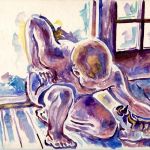
Johnny Petting O’malley
Although traveling to the museum is fairly easy, its visitors seldom feel crowded or rushed. Like those oaks outside the entrance, it exudes a feeling of timeless equanimity. That is part of its appeal. The Walter Anderson Museum of Art will always be a wonderful place. But, ideally, it is just a seed for something much larger, a place where those who want to dream about the beauty of humanity can come together with others who want to share this dream. Perhaps, if we are lucky, when enough people believe in that dream it too, like the museum, will be realized.


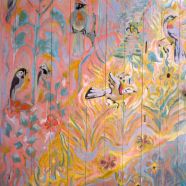





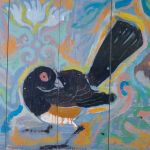
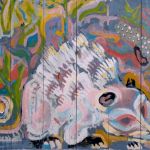
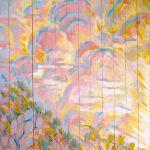
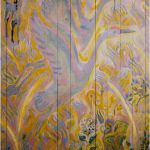
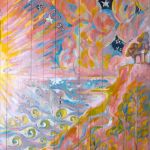
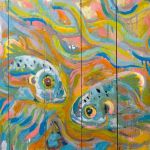
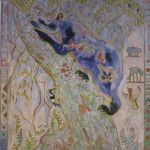
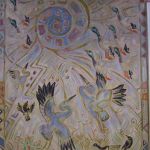
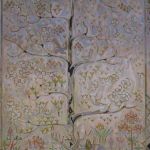
Lovely article about a most unique artist. Loved it! Thank you!
Wonderful article. I travel to Ocean Springs many times each year for the beautiful art work and the peaceful feel of nature which surrounds the town.
A great description of a great place dedicated to a great artist, and located in a great town.